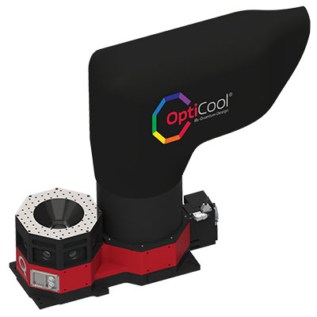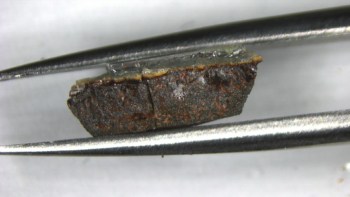Cryogenics specialist Quantum Design has designed a magneto-optical cryostat that for the first time brings their high magnetic field and cryogenics technology into a dedicated optical environment

Product development can often be an incremental process, but Quantum Design took the bold step of assigning three of its most experienced physicists to create a dedicated R&D unit to devise, design and build a new instrument from scratch. “We were told we could work on anything we wanted,” says William Neils, who heads the Q-Works R&D programme. “Our brief was to come up with an idea, follow our noses, and try to invent something new.”
The result? A unique, award-winning magneto-optical cryostat that offers researchers a much larger sample space, unrivalled optical access, and the ability to probe materials at temperatures below 2 K and magnetic fields as high as 7 T. Typical experiments might include optical inspection of a sample using a high-performance microscope objective, or pump−probe experiments that exploit pulses of light to analyse the behaviour and dynamics of materials at different temperatures and magnetic fields.
The OptiCool provides full control over the temperature and magnetic field so that researchers can study their sample in any environment.
Randy Black
“The OptiCool provides full control over the temperature and magnetic field so that researchers can study their sample in any environment,” says Q-Works team member Randy Black. “It’s also designed with lots of windows to get light in and out of the cryostat in a very efficient and convenient way.”

The reimagined design allows the cryostat to be integrated into an optical table, rather than needing the whole experiment to be assembled inside a separate cryostat. Seven side ports provide optical access of 270° around the sample, with an extra window allowing light in from the top. The cryostat can even be mounted on legs to allow light to enter and exit the instrument from underneath. “We wanted to create a system where the user has much better access to their sample in the optical environment,” says Neils.
According to Neils, the design of commercial magneto-optical cryostats has largely stood still for the last 30 years. With no dedicated optical cryostat in Quantum Design’s product line-up, and growing interest among the research community in using light-based measurement techniques at low temperatures, the Q-Works team saw an opportunity to create something new.
When the three physicists surveyed the competition, they found that none of the existing magneto-optical cryostats offered the perfect combination of features. High on the list of requirements is cryogen-free cooling that avoids the need for liquid helium, but these “dry” cryostats generate vibrations that can perturb precise optical measurements. To minimize these unwanted vibrations, existing instruments either revert to cooling with liquid helium or do not provide the option for a magnetic field. “We decided to create a product that no-one else was making: one that combined low vibrations, high magnetic field and cryogen-free cooling,” comments Black.
At the heart of the design is a unique geometry that moves the cryogenic components away from the sample. “We’ve created this kind of castle, an octagonal region where the magnet and the sample live, and pushed the cooler off to the side, out of the way,” explains Neils. “It’s a very open design, and means that the sample isn’t buried inside a large cryostat away from the optics.”
It’s a very open design, and means that the sample isn’t buried inside a large cryostat away from the optics.
William Neils
A crucial element of this approach is a split-coil, conical magnet designed and built by the Q-Works team. With a large bore size – almost 100 mm across – the sample can be positioned right inside the magnet, which is capable of generating magnetic fields of ±7 T. “In normal split-pair magnets, all the optical components have to be far away from the sample because the magnet is in the way,” says Dinesh Martien, the third Q-Works team member. “The conical shape allows you to bring your optical components much closer to the sample.”
The Q-Works physicists knew right from the start that they would need to design the superconducting magnet themselves. “Normally we would buy the magnet from another supplier, but we wanted to use every bit of space as efficiently as possible,” says Black. “It’s a very tight fit, with clearances of just a millimetre between surfaces and around the magnet, and we figured that we would have real problems if we tried to outsource that part of the design.”
While the team needed to learn how to build a superconducting magnet, they were also keen to exploit technologies they had already developed for Quantum Design’s broader product portfolio of high-performance cryostats. Much of the electronics used for temperature control, for example, was lifted from the Physical Property Measurement System (PPMS) DynaCool, as well as some of the operating software and the mechanisms for magnet control. That pragmatic approach allowed the team to invent and launch a completely new instrument within just three years, with the first products being installed in research labs by early 2019.
Previous experience with cryostat systems also inspired an early decision to design a modular system for loading the sample into the cryostat. Most refrigerators require the user to connect all the wiring inside the instrument, which makes it difficult to reach all the experimental components and connections. For the PPMS DynaCool system, however, the sample is loaded on to a small puck 25 mm across and then lowered into the instrument to make the measurement.
It’s really convenient for the user to be able to mount their sample and connect the wires to it while it’s on the bench.
Dinesh Martien
“It’s really convenient for the user to be able to mount their sample and connect the wires to it while it’s on the bench,” says Martien. “We needed to develop something that would fit into the geometry we had, and that would cope with a lot of wiring, as well as different types of wiring, to cope with things like piezoelectric nanopositioners and high-frequency radio signals.”
In a moment of serendipity, the Q-Works team realized that their bespoke magnet design would make it possible to create a much larger sample holder. “We hadn’t thought too much about that modularity until midway into the project, at which point we were also having difficulty with the magnet,” recalls Black. “We realized that making the magnet bigger would reduce the stresses in the system, and then the large bore size would provide a huge amount of space for a puck-like sample holder – which we then decided to call a sample pod.”
The team has now shipped a number of OptiCool instruments to academic labs in North America, Europe, and Asia, and the novel design was recognized by R&D World as one of the most innovative products introduced in 2018. The first instrument was installed in the lab of regular collaborator Richard Averitt at the University of California San Diego, who has been using it for pump–probe experiments with gadolinium titanate, a material that becomes magnetic when light is shined on it. “Integrating the OptiCool into my research program will make it possible to access an experimental phase space in complex materials that simply wasn’t available to my group in the past,” Averitt comments.

Neils says that research scientists have been excited about the experimental possibilities opened up by the OptiCool cryostat, even though it can take a while for them to work out how they can use it most effectively. “It’s different enough that it doesn’t fit into a category that they already know, so they often come back to us with questions,” he says. “Typically the scientists will look at the instrument, get an idea of how it can help, and then they will apply for a research grant to enable them to place an order.”
As well as time-resolved pump–probe experiments, researchers are using the instrument for free-space optics, or for imaging the surface of the sample using an optical microscope. Some research groups are interested in diamond-anvil cells, in which case optical access offers a mechanism for measuring the pressure inside the cell, while others are focusing on high-frequency signals using coaxial lines.
But it’s still too soon even for the early adopters to publish new research results based on experimental data obtained with the OptiCool. In the meantime, the Q-Works team is refining the instrument and building pre-configured options for some of the most common experimental requirements, such as nanopositioners, microscope objectives, and coaxial lines. “We’re not looking at turnkey measurements yet,” says Martien. “But we are aiming to integrate a microscope objective into the instrument, with nanopositioners below it, which would enable users to image their sample over a 2D region.”
The early success with the OptiCool instrument has also secured the future of the Q-Works programme for at least another year. “We’re going to continue to support this product, while also keeping an eye out for other ideas,” says Neils. “Hopefully we will have another winner.”
Q-Works: a new way to innovate
In early 2015, seeking to expand outside its traditional markets, Quantum Design’s directors charged William Neils with creating a dedicated R&D unit to identify and deliver a new business opportunity for the company. “The owners realized that they needed a different way to generate new product ideas, so they decided to pull a small group of people away from the normal day-to-day routine,” says Neils. “I immediately went to Randy [Black] and Dinesh [Martien] because we had worked closely together on a previous project and we worked very well together.”
The three physicists moved out of the main company building and set themselves up in a nearby suite. Apart from needing to find out how to procure essential services such as technical equipment and a regular supply of coffee, the team relished the freedom and the challenge of working outside the main company. “The suite was our own little sandbox to play in,” says Neils. “It felt like the company was expecting great things, and we knew it was important to rise to the challenge.”
The winning formula for the Q-Works physicists was to invent a completely new instrument that also exploited their existing knowledge of cryogenics systems. “We knew we were getting a lot of eyes on us,” says Martien. “When we evaluated what we should develop, we decided to produce a product that would enable us to leverage existing technologies so we could create something more quickly.”
With a successful product on the market within three years of setting up Q-Works, it seems that the gamble has paid off. “This was really a time when the whole company came together to implement and roll out the product,” says Barak Green, Quantum Design’s marketing manager. “It’s one of those success stories where everyone can feel good about what we’ve achieved.”




